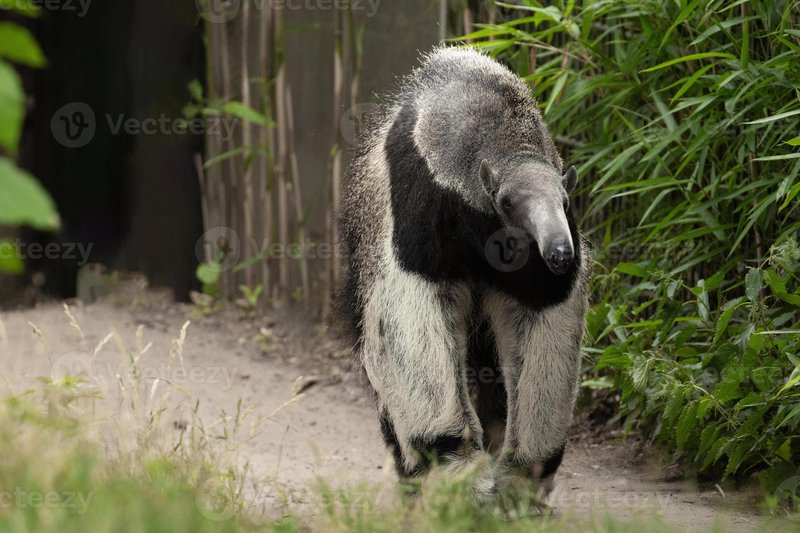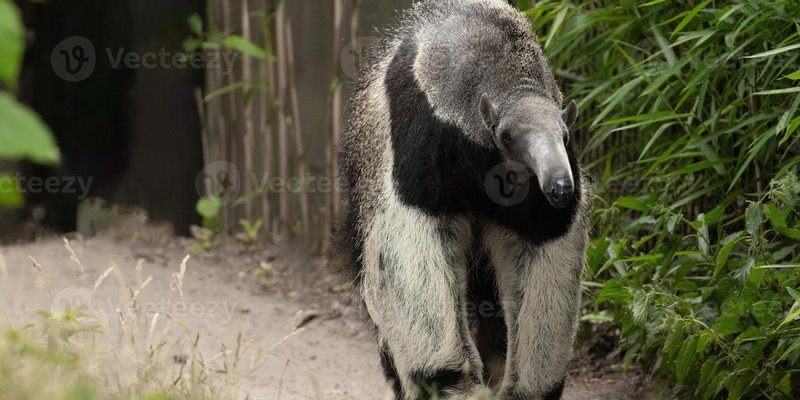
Anteaters belong to a group called the xenarthrans, which also includes sloths and armadillos. With four recognized species, these creatures are native to Central and South America. They are known for their specialized diet that primarily consists of ants and termites. But there’s more to them than just their favorite snack! In this guide, we’ll explore the many myths that surround anteaters and help you appreciate them for the unique beings they are.
Myth 1: Anteaters Are Related to Bears
You might have heard someone say that anteaters are somehow related to bears. Here’s the thing: this is far from the truth! Anteaters and bears are two completely different families of animals. While they might share some physical traits like claws or a somewhat bulky body, they don’t share a common lineage. Anteaters belong to the suborder Vermilingua, which means “worm tongue,” referring to their long tongues designed for catching insects.
To put it simply, thinking of anteaters as relatives of bears is like saying that dogs and cats are the same because they both have four legs. Both animals may live in similar habitats, but their diets and behaviors are vastly different. Bears are omnivores, munching on everything from berries to fish, while anteaters are strictly insectivores.
Myth 2: Anteaters Have Sharp Teeth for Eating
You might be surprised to learn that anteaters actually don’t have teeth! Instead, they rely on their specialized tongue, which can be up to 16 inches long, to capture their dinner. Imagine trying to eat spaghetti without a fork—that’s how anteaters tackle their meals! They use this tongue to slurp up ants and termites from their mounds.
In addition to their toothless mouths, anteaters have powerful jaws and an extraordinary sense of smell to locate their food. Some people might think they need sharp teeth to crack open tough insects, but their method is all about technique. They effectively crush their prey with their strong muscles instead. So next time you think about anteaters, remember they’re not toothy predators but rather skilled foragers!
Myth 3: All Anteaters Are the Same Size
When you picture an anteater, do you see a huge creature lumbering around? While the giant anteater is the most famous, not all anteaters are the same size. In fact, there are four species, each varying significantly in size. The giant anteater can reach up to 7 feet long, including its tail, while the smaller species, like the silky anteater, only measures around 15 inches long.
This size difference is crucial to their survival. Larger anteaters can cover more ground while foraging, while smaller ones can navigate through dense forests with ease. It’s kind of like comparing a lion to a house cat—both are part of the feline family, but their sizes and lifestyles are worlds apart. Learning about these differences helps us appreciate the diversity within this unique group of animals!
Myth 4: Anteaters Are Aggressive Animals
There’s a common belief that anteaters are aggressive creatures. Let me explain: while they do have strong front claws, which they can use to defend themselves, anteaters are generally quite peaceful. In fact, they prefer to avoid confrontation whenever possible. When threatened, they may hiss or stand up on their hind legs to make themselves look bigger, but aggression isn’t their main strategy.
If you ever encounter an anteater in the wild, it’s best to observe from a distance. Most of the time, these creatures are focused on finding their next meal rather than causing trouble. So, if you ever visit their habitats in Central or South America, remember—they’re just doing their thing, not looking for a fight.
Myth 5: Anteaters Don’t Have a Social Life
You might think of anteaters as solitary creatures, but they do have social behaviors! While it’s true that they often forage alone, anteaters sometimes engage with one another during mating season or around their offspring. For instance, a mother anteater will care for her young, teaching them how to find food and stay safe.
Social behaviors in anteaters might not look like what we find in more social animals like elephants or wolves, but that doesn’t mean they don’t bond. They communicate through body language and scent marking, letting each other know who’s around. It’s a reminder that animals have their own unique ways of connecting, even if it’s different from what we might expect.
Myth 6: Anteaters Are Endangered Everywhere
While it’s easy to think that all anteater species are at risk, that’s not entirely accurate. The giant anteater is classified as vulnerable, primarily due to habitat loss, while the lesser anteater faces threats from deforestation as well. However, some other species, like the southern tamandua, have more stable populations.
It’s essential to understand that not all animals in a species face the same level of risk. Conservation efforts are in place for many of these creatures. By learning about their status and supporting wildlife protection, we can help ensure that future generations will still marvel at these incredible animals.
Myth 7: Anteaters Are Just Weird-Looking Animals
Let’s face it: when we think about anteaters, the first thing that comes to mind might be their unusual appearance. But instead of seeing them as “weird,” it’s more accurate to appreciate their unique adaptations. Their long snouts and powerful limbs are perfect for their specialized diet. It’s like how some people might think a platypus looks odd, but each feature serves a purpose.
From their specialized tongues to their impressive sense of smell, anteaters are marvels of evolution. Their appearance may raise eyebrows, but they are a product of millions of years of adaptation to their specific environments. The next time you see an anteater, try to look beyond their looks and appreciate the incredible design of nature!
In conclusion, anteaters are full of surprises, and understanding them helps us appreciate the wonders of wildlife. While myths and misconceptions might lead to confusion, taking the time to learn the truth reveals just how fascinating these animals are. Let’s embrace the uniqueness of anteaters and celebrate the diversity of life on our planet!

